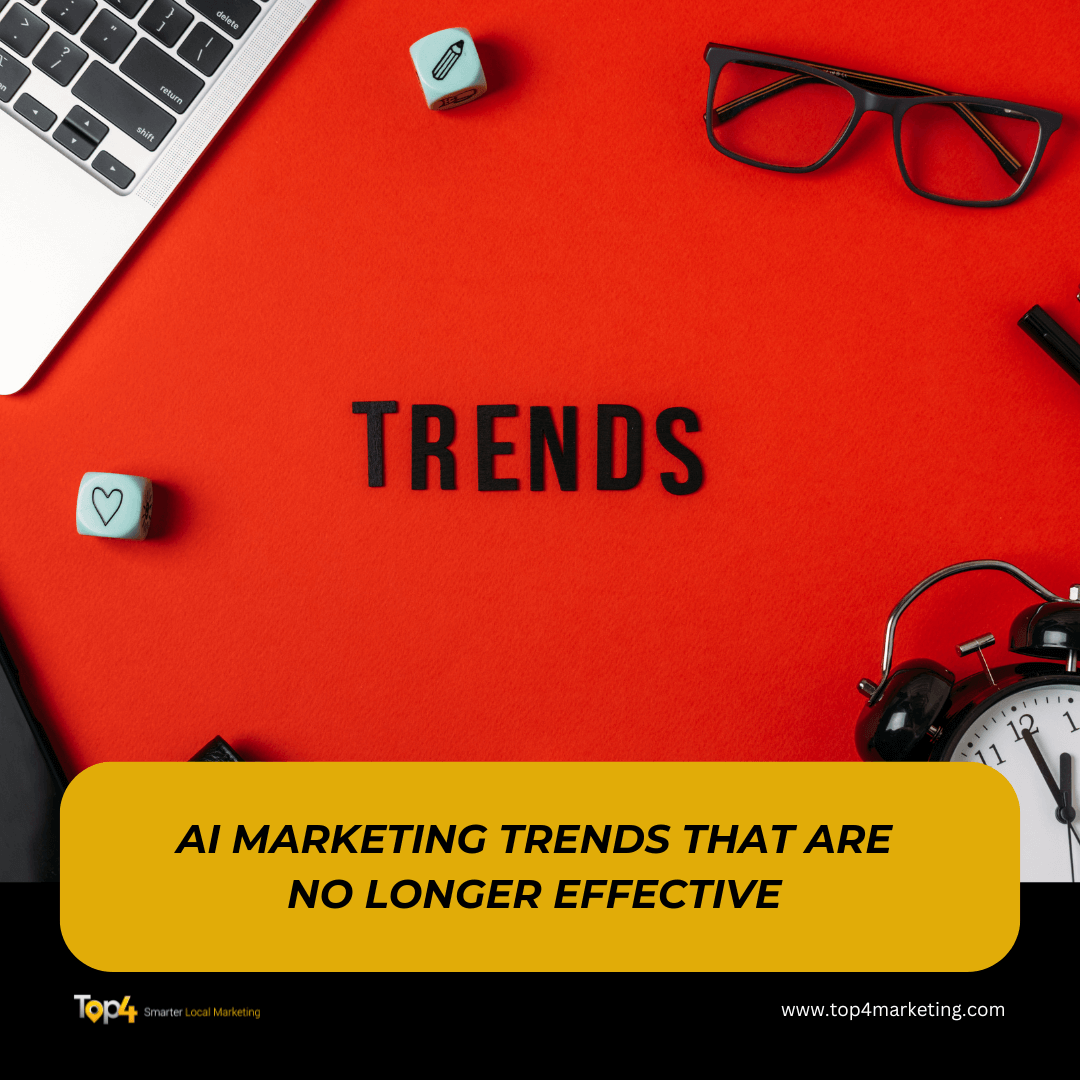Artificial intelligence has transformed the way businesses connect with their audiences and personalise experiences in the marketing world. But just as technology continues to evolve, so do the tactics that garner bottom-line results. What worked so well then is now what may be holding them back: stale AI marketing trends that no longer appeal to consumers or keep pace with evolved technologies.
Consider the case of chatbots and recommendation engines-both were revolutionary once. While this helped upgrade marketing functions in companies, holding on to older versions can indeed be a losing opportunity and customer satisfaction. Customers have grown to expect more thoughtful and intuitive experiences, and brands will be left behind if they don’t keep up.
From this article, learn why six AI marketing trends should be retired and, instead, find out about the alternative approaches. Whether you run an e-commerce store or manage marketing for a small to medium enterprise, these shifts are going to be worth understanding.
Static Chatbots Are No Longer Enough
At one time, chatbots were revolutionary tools for marketing departments seeking an automated way to interact with customers. Early models were very dependent on pre-programmed scripts, supplying responses that were inflexible and impersonal. They had solved some query issues but frustrated users for medium-complexity or nuanced issues.
Today's consumers want and expect more. With the advancement in NLP and machine learning, the chatbots have grown substantially, offering a lot more than simple versions of themselves. It enables a chatbot to understand the context and intent of customer inquiries and provide relevant responses that sound natural. For example, instead of offering only pre-programmed answers, advanced chatbots analyze previous user interactions, intuitively determine what they are looking for, and offer timely support.
The other limitation of traditional chatbots has to do with their inability to rise to unexpected situations. For instance, if the customer's question sounds vague or open-ended, older chatbots could give responses that may be irrelevant or incomplete, causing dissatisfaction. These AI-driven chatbots, on the other hand, are doing a great job: handling ambiguity, asking for clarification questions, and even escalating complex issues to human agents in need.
Businesses that remain with static chatbots also risk providing a poor customer experience, which can turn away prospective customers. Moving to dynamic, adaptive chatbot systems is no longer optional; it is a necessity in terms of fulfilling today's customer expectations and staying ahead of the competitive curve.
Keyword-Only Sentiment Analysis Falls Short
Sentiment analysis, in its early days, was a break-through tool in AI marketing. It allowed businesses to gauge customer emotion by scanning social media posts, reviews, or other user-generated content for keywords. Unfortunately, this method quickly revealed its limitations. Keyword-based sentiment analysis tends to misinterpret the tone, sarcasm, or context and thus generally comes up with flawed conclusions.
Consider the tweet "Oh great, another delayed delivery." A simple sentiment analysis tool would categorise this as positive because of the word "great," but it would be missing out on the tone of sarcasm present that actually makes the tweet negative. Likewise, multimedia content-memes, videos, and emojis, for example-are used increasingly to convey opinions, but traditional sentiment analysis tools lack the capability to process these formats.
This has been greatly improved upon by modern AI solutions. By incorporating NLU and multimodal AI into today's tools, the ability to analyse not only text but also visual and auditory elements is possible. For example, they can interpret an image in a customer's post or recognise vocal tone in an audio review, providing a more accurate insight into the customer's sentiment.
It will limit the brand's ability to respond to customer feedback in a timely manner or spot emerging trends. Advanced AI-powered tools make it possible for businesses to better understand the full spectrum of customer emotions and help businesses become more in tune with their customers.
Historical Data-Driven Predictions are Outdated
Predictive analytics fueled by historical data once revolutionised the way companies planned their marketing strategies. By mapping past trends, brands could anticipate customer behavior, enhance targeting, and make smarter decisions. But relying entirely on historical data has some serious limitations in today's fast-moving dynamic markets.
Consumer preferences and behaviors can change overnight, and changes in economic conditions or cultural shifts happen just as fast. For these real-time changes, historical data alone cannot account for them, and this makes campaigns seem outdated or irrelevant. Predicting this year's trends, for example, by using last year's holiday shopping patterns might fall short of recognising the emergent behaviors driven by new technologies or even unexpected global events.
Predictive analytics using today's advanced tools brings real-time data streams together with historical knowledge. These systems monitor continued behavior, such as website interactions happening now or social media exchanges, and merge this information with external factors like weather or current events. This adaptive approach allows businesses to refine their strategies quickly, delivering more relevant and personalised campaigns.
Simplistic Product Recommendations Fall Short
Similarly, it is no longer sufficient for just purchase history to drive the recommendation engines. While past buying behavior provides great insight, it's just one piece of a much larger puzzle. Simplistic recommendations seem impersonal and can't excite customers who have grown to expect smarter, context-aware suggestions.
Today's AI recommendation systems weave in a broad array of data points, from browsing habits and location to even external factors such as weather. For example, a customer searching for outdoor gear may get recommendations on seasonal items pertaining to their region's weather. Such level of personalisation does more than just raise engagement levels; it also creates loyalty because the customer feels understood.
Companies that stay with the same old recommendation methods may very well fade into irrelevance. Moving to more sophisticated systems assures customers that their recommendations match up with unique preferences and situations.
Voice Search Optimization Has Peaked
Voice search optimisation became the focus of attention when voice devices such as Alexa, Siri, and Google Assistant began to gain widespread acceptance. At the time, optimizing content to capture voice search seemed to be a promising marketing ground. However, even though voice search has reached its peak, focusing exclusively on VSO no longer provides great returns.
Task-oriented voice experiences, like voice commerce and interactive applications, are the futures. These solutions focus more on functionality, allowing users to get something done, such as buying something, setting reminders, or scheduling an appointment. For instance, a voice shopping assistant that integrates with the e-commerce platform offers much greater value compared to a basic voice-optimised page of FAQs.
It's now time for brands to stop focusing on traditional VSO and start working on creating practical voice-enabled tools aligned with user needs so that their offerings would remain relevant as consumer expectations evolve.
Demographic-Based Customer Segmentation Is Too General
Demographic segmentation, which is by age, gender, or location, has been used for many years in marketing. Today, it sounds rudimentary at best in a world where consumers have come to expect experiences tailored with hyper-personalisation.
AI-powered micro-segmentation, on the other hand, is much more refined. By considering behavioral and psychographic data, businesses can develop highly targeted campaigns that keyed in on individual preferences and motivations. Rather than marketing a product to a general base of all 25- to 35-year-olds, advanced segmentation can pinpoint the eco-conscious shoppers or the tech enthusiast and more effectively message to their very unique interests.
This shift from broad demographics to personalized micro-segmentation enables companies to relate better to customers, resulting in increasing engagement and conversion rates. Adhering to the traditional ways of segmentation will eventually drive away audiences as they expect more with modern marketing.
Conclusion
But as AI continues to evolve, so must marketers-to retire methods that no longer serve them and their customers. Static chatbots, keyword-based sentiment analysis, and demographic-based segmentation were once revolutionary trends, but they fall flat in consumer expectations today. Continuing with these outdated AI marketing trends could cause a loss of potential opportunities for audience engagement.
With the incorporation of advanced solutions like natural language processing-driven chatbots, real-time predictive analytics, and dynamic micro-segmentation, companies can outpace the competition in the marketplace. Such innovations enable newer ways to personalize, adapt, and make marketing operationally efficient to meet the ever-changing environment and keep the brands relevant and effective.
Successful marketing would begin by changing with the times. Ditching the obsolete ways of reaching people and using state-of-the-art AI tools helps businesses fashion more effective campaigns, deepen their bond with customers, and enable their brand longevity.
At Top4 Marketing, our expertise can help you craft a local marketing plan that aligns with your business goals and local community needs. Let us assist you in maximising your online strategy. Visit Top4 Marketing blog for more insights to elevate your business to new heights. Contact us today and start your journey towards local marketing success.


 SAUDI ARABIA
SAUDI ARABIA

























